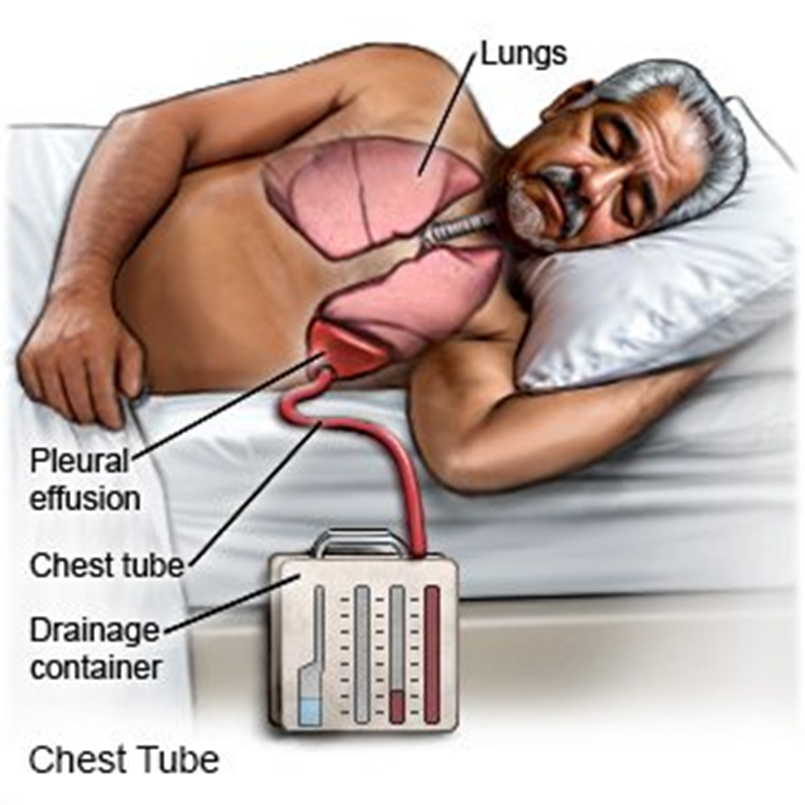A nurse is caring for a client who has Cushing’s syndrome. The nurse should recognize that which of the following are manifestations of Cushing’s syndrome? (Select all that apply)
Buffalo hump
Moon face
Hypertension
Purple striations
Tremors
Correct Answer : A,B,C,D
Choice A reason: A buffalo hump is a characteristic sign of Cushing’s syndrome. It refers to the accumulation of fat on the back of the neck and shoulders. This symptom occurs due to the excessive production of cortisol, which leads to abnormal fat distribution in the body.
Choice B reason: Moon face is another hallmark of Cushing’s syndrome. It describes the rounding and fullness of the face, which results from fat deposits. This symptom is also caused by prolonged exposure to high levels of cortisol.
Choice C reason: Hypertension, or high blood pressure, is commonly associated with Cushing’s syndrome. Cortisol increases blood pressure by enhancing the sensitivity of blood vessels to catecholamines and by promoting sodium and water retention.
Choice D reason: Purple striations, or stretch marks, are often seen in individuals with Cushing’s syndrome. These marks typically appear on the abdomen, thighs, breasts, and arms. They result from the thinning of the skin and the breakdown of collagen due to elevated cortisol levels.
Choice E reason: Tremors are not typically associated with Cushing’s syndrome. While Cushing’s syndrome can cause a variety of symptoms, tremors are more commonly linked to other conditions such as hyperthyroidism or neurological disorders.
Nursing Test Bank
Naxlex Comprehensive Predictor Exams
Related Questions
Correct Answer is ["A","C","D","E"]
Explanation
Choice A: Instruct the patient to withhold any medication for diuretic therapy.
Reason: Diuretics can lead to dehydration and electrolyte imbalances, which can complicate the cardiac catheterization procedure. Withholding diuretics helps to maintain fluid balance and reduce the risk of complications during the procedure
Choice B: Prepare to administer fluids 2 hours before the procedure for patients with renal dysfunction.
Reason: Administering fluids before the procedure helps to prevent contrast-induced nephropathy, especially in patients with renal dysfunction. Hydration helps to flush out the contrast material used during the procedure, reducing the risk of kidney damage.
Choice C: Advise the patient to take all anticoagulants.
Reason: This choice is incorrect. Patients are usually advised to withhold anticoagulants before a cardiac catheterization to reduce the risk of bleeding complications. The decision to continue or withhold anticoagulants should be based on a careful assessment of the patient’s risk of thromboembolism versus the risk of bleeding.
Choice D: Administer steroids if the patient has an allergy to iodine-based contrast.
Reason: Administering steroids is a common premedication strategy for patients with a known allergy to iodine-based contrast media. Steroids help to reduce the risk of an allergic reaction during the procedure.
Choice E: Ensure that the patient is NPO for a minimum of 2 hours before the procedure.
Reason: Ensuring that the patient is NPO (nothing by mouth) helps to reduce the risk of aspiration during the procedure. Typically, patients are advised to be NPO for 6-8 hours before the procedure, but a minimum of 2 hours is essential.
Correct Answer is D
Explanation
Choice A Reason:
Malfunction of the alarm button is unlikely to be the cause of increased peak airway pressure. The alarm is designed to alert the nurse to a problem with the ventilator or the patient’s airway, not to malfunction itself. Therefore, this is not the first thing the nurse should assess.
Choice B Reason:
A cut or slice in the tubing from the ventilator could cause a loss of pressure or air leak, but it would not typically result in increased peak airway pressure. Instead, it would likely cause a decrease in pressure and potentially trigger a different alarm.
Choice C Reason:
Higher than normal endotracheal cuff pressure can contribute to increased peak airway pressure. However, it is not the most immediate concern compared to a kink in the tubing, which can completely obstruct airflow and rapidly compromise the patient’s ventilation.
Choice D Reason:
A kink in the ventilator tubing is a common and immediate cause of increased peak airway pressure. It obstructs the flow of air, leading to a buildup of pressure in the system. This is the first thing the nurse should assess and correct to ensure the patient is receiving adequate ventilation.

Whether you are a student looking to ace your exams or a practicing nurse seeking to enhance your expertise , our nursing education contents will empower you with the confidence and competence to make a difference in the lives of patients and become a respected leader in the healthcare field.
Visit Naxlex, invest in your future and unlock endless possibilities with our unparalleled nursing education contents today
Report Wrong Answer on the Current Question
Do you disagree with the answer? If yes, what is your expected answer? Explain.
Kindly be descriptive with the issue you are facing.
